
This article originates from Women In 3D Printing and is part of our effort to support the use of 3D printing technology by women. The article is re-published with permission.
This interview is part of our IBM 360 Fashion & Tech “Startup Runway & Innovation Awards” series, featuring female designers and entrepreneurs who showcased their work during the “Startup Runway & Innovation Awards” event that took place in San Francisco on November the 3rd.
Rachel Nhan was among the featured designers on the runway. Rachel became famous in the 3D Printing industry thanks to her 3D Printed Neckpiece, before even graduating!
Rachel, could you let us know about your background and what brought you into 3D printing?
Rachel: My undergraduate studies at Texas A&M University focused primarily on 3D modeling and animation for the film industry. I learned a few 3D modeling programs for school and was mainly interested in character modeling after graduation. Fashion has always been a passion in my life, evolving over time, from reading fashion magazines to maintaining a style blog. I wanted to apply my technical background to wearable designs, but found myself very unfamiliar with the apparel industry. After moving to NYC and studying at the Fashion Institute of Technology I learned the classic methods of fashion design and combined them with modern digital fabrication technologies.
Was the “3D Printed Neckpiece” your very first experience with 3D printing?
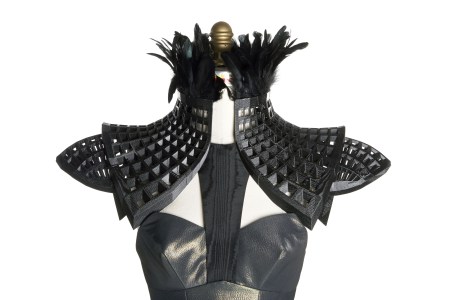
The 3D printed neckpiece was the first time I had printed a 3D model I created — it was printed at the PrintFX Lab at FIT. When I learned that the school had a 3D printer on campus, I was very determined to incorporate the technology into my final term garment. Our final garments from that course were for a “Mad Max meets Marie Antoinette” themed exhibition. The neckpiece was inspired by Tina Turner’s character from Beyond Thunderdome, Aunty Entity. I modeled the neckpiece in Maya and combined it with a dress I sewed to form the look I wanted. The strong structural qualities of the 3D printed piece gave the perfect silhouette to reference Aunty Entity’s bold persona. It was a completely new experience to be able to see and handle an object that was once just an idea behind a computer screen. 3D printing has introduced new ways for designers to communicate their concepts and present their visions in concrete form.
Talking of inspiration… where does yours come from?

Cinema mostly. After my first 3D design was inspired by Mad Max, I found most of the inspiration for my following designs from films. I’ve always been very interested in movies, especially because I initially wanted to pursue character modeling and design for animated movies. In a way, I am still modeling characters, they are just brought to life now by models on the runway. Fashion is about getting to become a new identity or bringing out traits in someone that are otherwise unseen. I like to create garments that bring out otherworldly characters in their wearers. My second and third 3D printed looks have been inspired by the movies Alien and Metropolis. The juxtaposition of organic soft elements with harsh futuristic qualities has always been a strong influence in my work.
Why using 3D Printing?
Haute couture fashion has always been about the more conceptual, directional look that usually involves intricate garments and accessories. At an atelier, there are many hands working on each detailed element of one avant garde look. I greatly admire designers like Alexander McQueen, Thierry Mugler, and Gareth Pugh — their looks always involve pieces that are awe-inspiring in both scale and detail. For me designing independently, it would be incredibly difficult to produce that level of complexity on my own. 3D printing allows me to execute very elaborate ideas quickly and exactly to my vision. The technology allows for customization and individuality when it was previously almost impossible to achieve something at that level as a small designer.
What challenges are you facing when conceiving and 3d printing your pieces?
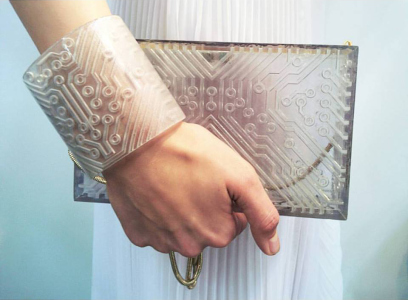
The biggest challenge I have faced in my work is wearability. While digitally creating something in a computer program, I may have one concept in mind, but once it is a real object it may not fit or suit a model in real life as I had envisioned. It’s been an ongoing learning process to adapt my 3D designs to be more versatile — making them more adaptable for models of different sizes, more secure incase of any runway emergencies, and easily disassembled to be able to travel from show to show.
What do you think of the 3D printing industry today?
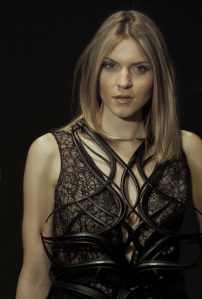
The industry is expanding very rapidly and it’s exciting to see where the technology is being applied and how its capabilities are helping people from every industry. All the new materials that can be printed with are widening the range of applications. Now that we can print in everything from human cells, to flexible filament, to concrete — the public is imagining the technology in so many different ways. I think it’s also important to remember though, the power that rapid prototyping gives individuals. Printing in simple plastics such as ABS or PLA gives designers a way to test out their ideas cheaply without having to commit to investing in a mold for mass production, bulk order costs, or finding overseas vendors. Having a physical sample ensures designers of what their end product will be and helps secure investors in that product.
What would be your “dreams come true” in the industry?
In an industry that has become heavily dependent on “fast fashion” and throw-away trends, it would be an incredible accomplishment to use 3D printers to produce environmentally friendly clothes made from recyclable materials. There are many recent advancements in 3D printing textiles from flexible plastic filament to actual yarn-like fibers. I believe that using 3D printing to create garments that can eventually be broken down and processed into base filament to form a new garment could help moderate the issues that fast fashion has inflicted on our environment. Consumers are much more aware of what is current and in style today, they want something fresh every week and are frequently purchasing new products to keep up with trends. As a consequence there are underpaid workers in dangerous factory conditions and landfills filled with rapidly discarded poorly made clothing. Advancements in the industry by projects like the Electro-loom and exotic materials like flexible thermoplastics could very soon create a way for consumers to print their own clothes and then reuse that printed garment into a new design when they want to refresh their look.
In your opinion, how could we encourage more women to become involved with 3D Printing?
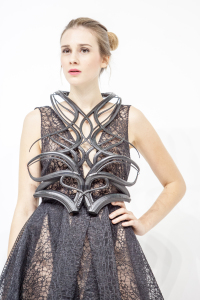
The first step towards encouraging more women to use 3D printing would be to start early with technology-focused educational programs for young girls. Growing up with two parents who were both computer programmers, I was fortunate to have been raised in an environment where a career or personal interest in the tech industry has always been an option. Its great to see coding and CAD software becoming increasingly incorporated into high school curriculums, but I still believe that our schools could be more proactive about involving their female students in these courses. A large part of the issue is the disconnect between technology and design, so much of the time they are seen as two separate interests when in reality they are skills that enhance each other. Technology allows design to be actualized and design supports the appeal and usability of technology. Breaking down the barrier between the two fields would help appeal to more women.
If you are interested in learning more about Rachel and her work, we invite you to visit her portfolio here!
And don’t forget to join the Women in 3D Printing group on LinkedIn and Facebook!
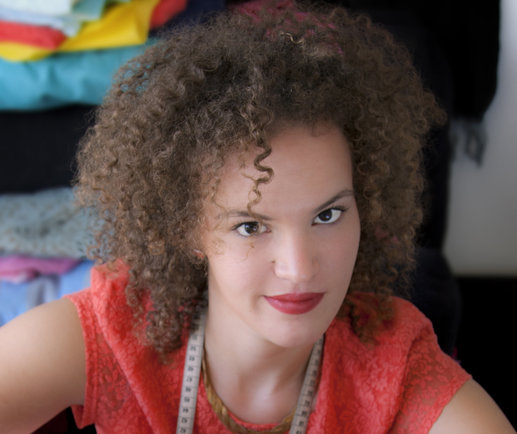
California-based Nora Toure is the woman behind “Women in 3D Printing”, a group dedicated to promoting and showcasing the use of 3D printing for women. She’s also a Sales Manager at 3D print -on-demand service Sculpteo.

